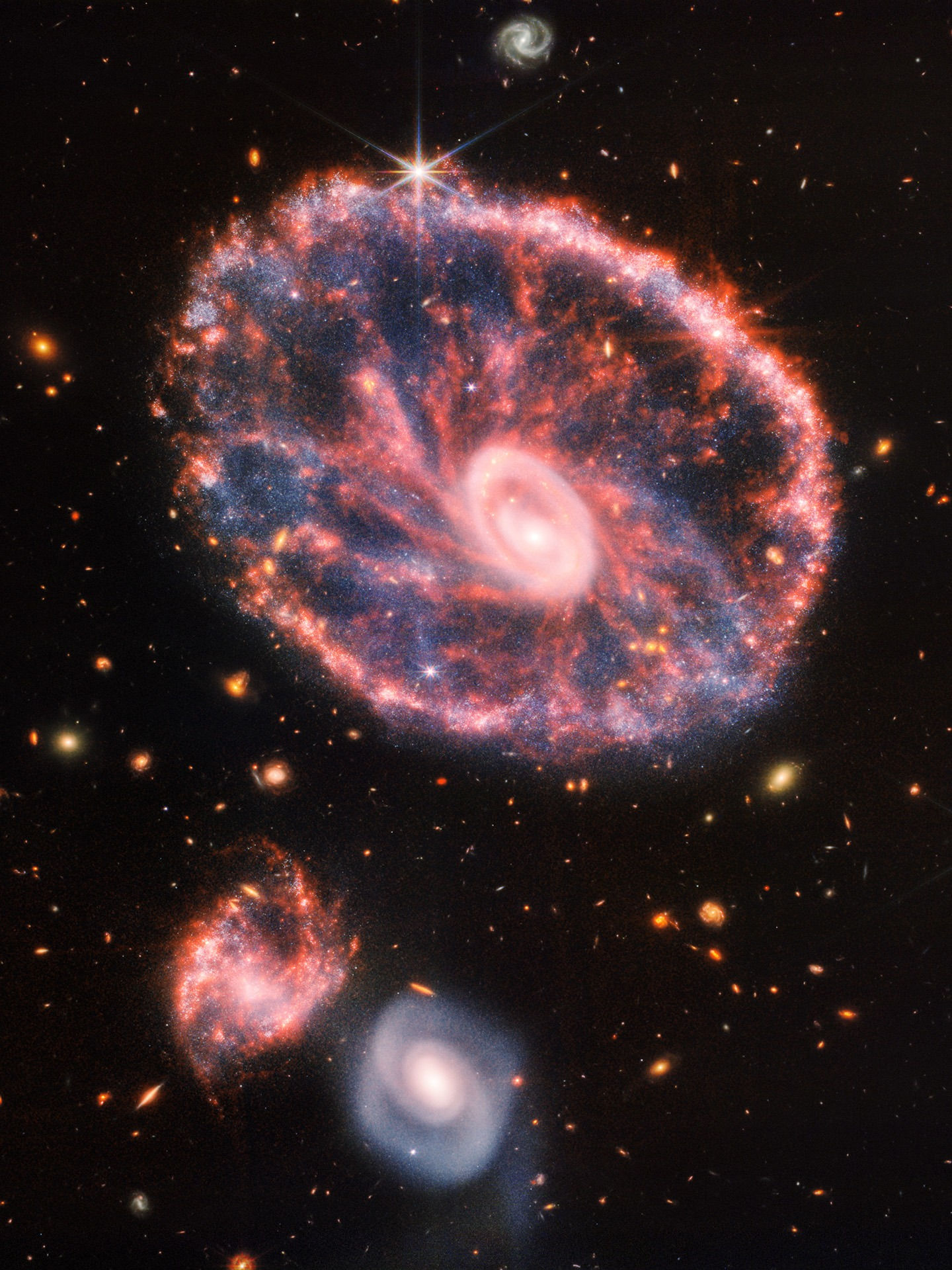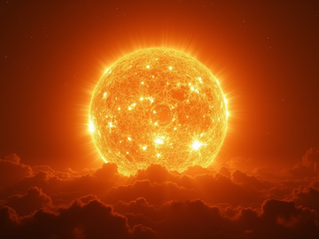Why Time Can't Stop: There is one Force in Nature Stronger than the Gravity of a Black Hole
- Phystroid

- Feb 28, 2023
- 6 min read

Time is a fundamental concept that has been used by humans for millennia. From the earliest civilizations to modern times, measuring time has been a crucial tool for organizing human activities and improving our understanding of the natural world. Time dilation is a fascinating phenomenon that occurs when an object is moving at a high velocity relative to an observer. According to the theory of relativity, time appears to move slower for the moving object than for the observer who is at rest.
What one observer perceives as happening in a certain amount of time, another observer moving at a different velocity may perceive as happening in a different amount of time. One way to think about time dilation is through the concept of the "light clock." Imagine a clock consisting of a beam of light bouncing back and forth between two mirrors. If we observe this clock while it is stationary, we would see the light beam moving up and down at a fixed rate, which we would interpret as the passage of time. However, if we observe this clock while it is moving at a high velocity relative to us, the light beam will appear to travel a longer distance and take a longer time to complete a cycle. As a result, time appears to move slower for the moving clock relative to the stationary clock.
The constancy of the speed of light is a crucial aspect of special relativity and the concept of time dilation. The speed of light is considered to be the same for all observers, regardless of their motion relative to the source of the light. This means that the light clock analogy works specifically because the speed of light is constant, and the distance that the light beam travels appears longer to a moving observer due to the relative motion between the observer and the clock.
If we were to use a ball instead of a beam of light in the clock, we would not observe time dilation at small speeds, since the speed of the ball would not be the same for all observers. Time dilation only occurs when an object is moving at a significant fraction of the speed of light, where the effects of relativistic motion become noticeable.
The constancy of the speed of light is one of the fundamental postulates of special relativity, which is based on experimental evidence and has been verified through numerous experiments. The postulate states that the speed of light in a vacuum is always the same, regardless of the motion of the observer or the source of the light.
One possible explanation for this constancy is that it arises from the structure of spacetime itself. According to special relativity, spacetime is not a fixed, static arena, but rather a dynamic, malleable entity that is affected by the presence of matter and energy. The properties of light and its interaction with spacetime are therefore intimately linked.
In fact, the constancy of the speed of light is a consequence of a more general principle known as the principle of relativity, which states that the laws of physics are the same for all observers in uniform motion relative to each other. This principle, combined with the postulate of the constancy of the speed of light, forms the basis of special relativity. While the ultimate reason for the constancy of the speed of light may still be a mystery, it is a well-established principle that has been confirmed by a vast body of experimental evidence and is an essential component of modern physics.
The idea of a dynamic, non-static spacetime is in accordance with modern observations of the expansion of the universe. According to the Big Bang model, the universe began as an infinitely hot and dense point, and has been expanding and cooling ever since. The expansion of the universe is described by the metric of spacetime itself, which is a dynamic entity that can change over time. One consequence of this dynamic spacetime is that the light emitted by distant galaxies can be redshifted due to the expansion of space. As the universe expands, the wavelength of light from distant sources is stretched, causing it to appear redder than it would if the universe were not expanding. This effect, known as cosmological redshift, is one of the key pieces of evidence for the expanding universe and the Big Bang model.
In addition, the structure of spacetime itself can be affected by the distribution of matter and energy in the universe. The presence of massive objects such as galaxies and black holes can cause distortions in spacetime known as gravitational lensing, which can bend and magnify the light from distant sources.
Overall, the idea of a dynamic, non-static spacetime is an essential component of modern cosmology and is supported by a wealth of observational evidence.
Time dilation may seem like a bizarre concept, but it has been proven through numerous experiments, such as the famous Hafele-Keating experiment in 1971. In this experiment, atomic clocks were flown around the world on airplanes, and the results showed that the clocks on the planes ran slower than clocks on the ground.
The implications of time dilation are significant and have practical applications in our daily lives. For example, GPS satellites, which are in orbit around the Earth, must take into account time dilation in order to provide accurate location information. In addition to its practical applications, time dilation has also captured the imagination of science fiction writers and has been featured in many popular works, such as the movie "Interstellar." The concept of time dilation is indeed a fascinating and mind-bending topic that offers a glimpse into the strange and wonderful world of physics. While the concepts of time dilation and relativity are indeed well-established in physics, they can still be mysterious and difficult to grasp intuitively for many people.
The counterintuitive nature of time dilation, where time appears to move slower for an object in motion relative to an observer, can challenge our everyday understanding of time and space. Furthermore, while the underlying principles behind time dilation are well understood, there are still ongoing research efforts to explore its applications and implications in various areas of physics. For example, researchers are currently exploring the effects of time dilation on quantum systems, which could have implications for the development of quantum technologies.
Gravitational time dilation:
Time is also relative to the gravitational field strength. This has also been proven experimentally, and is supported theoretically by the general theory of relativity.
We can think of the gravitational time dilation as the restricted movement of clocks due to the presence of gravitational fields.
What is more, as an object falls towards a black hole, it will experience increasingly strong tidal forces as it approaches the singularity. These tidal forces arise from the fact that the gravitational field near a black hole is extremely strong and is not uniform, meaning that different parts of an object will experience different gravitational forces. This can cause the object to be stretched or compressed, and can even cause it to be torn apart if the tidal forces are strong enough. So if we try to visualize a clock near enough the center of a black hole, then the truth is that this clock can't actually exist because it is being destroyed by tidal forces. Every particle in nature constitutes a clock according to the equations: E=hf and E=mc^2. This means that m= hf/c^2, or in other words that a specific frequency corresponds to every particle of nature. However, even when the matter has been decomposed to the greatest extend into the most elementary particles, this equation would also break down as the wavelength would be red shifted.
The ultimate fate of matter falling into a black hole is still an area of active research and debate among physicists. It is possible that matter falling into a black hole will be broken down into its constituent particles, and that these particles will eventually be destroyed as they approach the singularity. At this point, the concept of time as we know it, may lose its meaning, and the laws of physics as we currently understand them may break down.
It is also possible that there is a more complete theory of quantum gravity that could describe the behavior of matter near a black hole singularity, and that this theory could shed new light on the ultimate fate of matter falling into a black hole. Ultimately, the behavior of matter and energy near a black hole singularity remains one of the great mysteries of modern physics, and is an active area of research for theoretical physicists.
Time as we know it should perhaps stop at the center of a black hole. There is nevertheless a force in nature that is even stronger than the gravity of a black hole, that can make the clock of any black hole in nature to start ticking again. This force is the cosmic expansion of space after the Big Bang. Therefore, the time that depends on this clock still exists and what is more during the Big Bang the Universe was perhaps a black hole, and this ultimate force of cosmic expansion was able to get the Universe out of the black hole state. Thanks to this force we don't live in a singularity and we are on earth to ask questions about the secrets of the Universe.












































































































Comments